SOMME BRITISH Sector - Ovillers - la Boisselle
Years of visit: 2005, 2007, 2012
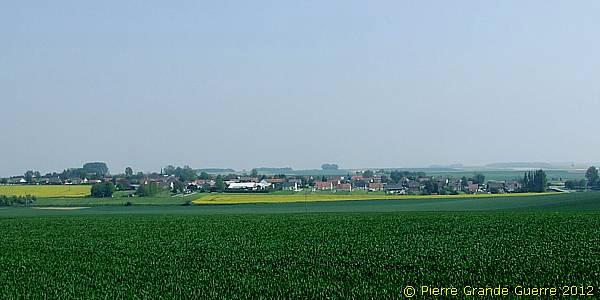
| South of Thiepval is located one community of two 2 villages , Ovillers -la Boisselle , lying on both sides of the D 929, the road from Albert to Bapaume. During 1914-1915 this area formed the battlefield of the French and the Germans , but it also formed an important battlefield of the British during the summer of 1916. We will visit the Ovillers British Military Cemetery , and at la Boisselle the Tyneside Memorial Seat, the Lochnagar Mine Crater , and the Glory Hole trenches. Here we will make a jump backwards in time from 1 July 1916 to the period of December 1914, when French Breton regiments defended this front sector. We will continue to the northern outskirts of la Boisselle to the Breton Calvary of la Boisselle. From there we return to the summer of 1916 and we will continue in the direction of Pozières for a visit to the Rifle Corps Memorial, the sunken Dead Man’s road and in the Chalk Pit. |

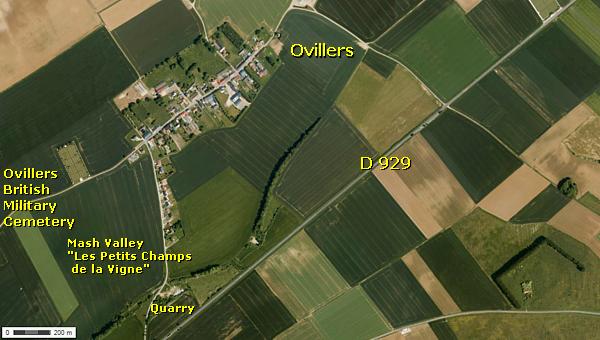
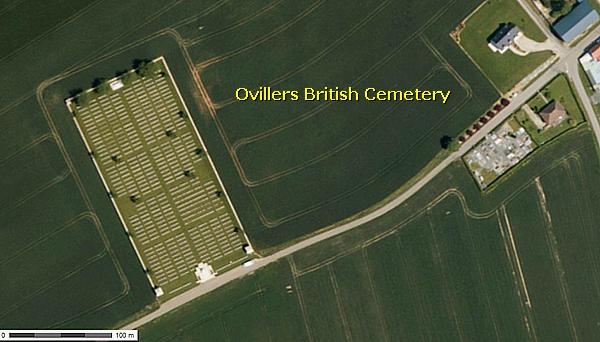
We start at Ovillers at the Ovillers British Military Cemetery .
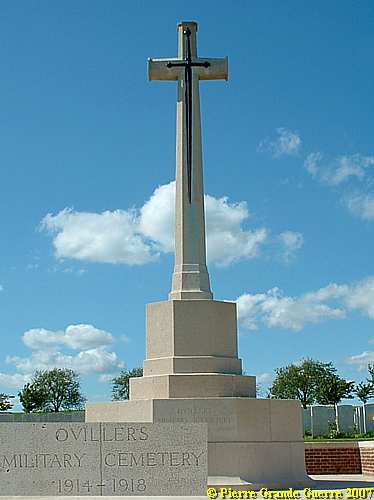
On 1 July 1916, the first day of the Battle of the Somme, the 8th Division attacked Ovillers and the 34th Division La Boisselle. The villages were not captured, but ground was won between them and to the south of La Boisselle. On 4 July, the 19th (Western) Division cleared La Boisselle and on 7 July the 12th (Eastern) and 25th Divisions gained part of Ovillers, the village being cleared by the 48th (South Midland) Division on 17 July. The two villages were lost during the German advance in March 1918, but they were retaken on the following 24 August by the 38th (Welsh) Division. Ovillers Military Cemetery was begun before the capture of Ovillers, as a battle cemetery behind a dressing station. It was used until March 1917, by which time it contained 143 graves, about half the present Plot I. The cemetery was increased after the Armistice when Commonwealth and French graves where brought in, mainly from the battlefields of Pozieres, Ovillers, La Boisselle and Contalmaison, and from the following two cemeteries:- MASH VALLEY CEMETERY, OVILLERS-LA BOISSELLE, was about 200 metres North of Ovillers Military Cemetery. It was named from one of two valleys (Mash and Sausage) which run from South-West to North-East on either side of La Boisselle. It contained the graves of 76 soldiers from the United Kingdom who fell in July-September 1916. RED DRAGON CEMETERY, OVILLERS-LA BOISSELLE, was midway between Ovillers and La Boisselle. It was made by the 16th and 17th Royal Welch Fusiliers, and named from their badge. It contained the graves of 25 soldiers who fell in August 1918, all of whom belonged to the 38th (Welsh) Division, and all but three to the Royal Welch Fusiliers. There are now 3,440 Commonwealth servicemen of the First World War buried or commemorated in the cemetery. 2,480 of the burials are unidentified but there are special memorials to 24 casualties believed to be buried among them. Other special memorials record the names of 35 casualties, buried in Mash Valley Cemetery, whose graves were destroyed in later fighting. The cemetery also contains 120 French war graves. The cemetery was designed by Sir Herbert Baker.
Source
: Commonwealth War Graves Commission
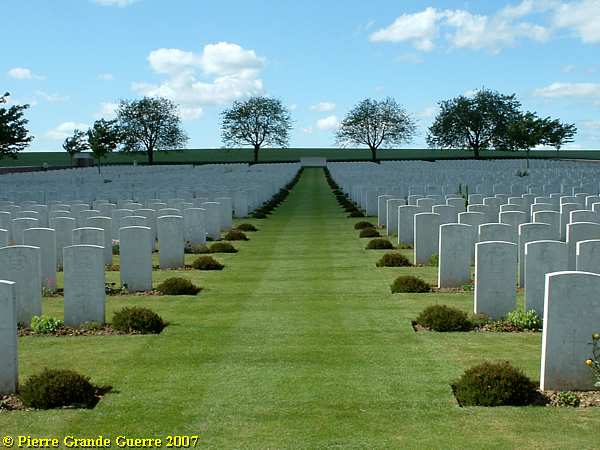
Ovillers - la Boiselle, 1 July 1916

South of Thiepval the German 26. Reserve Division occupied the heavily fortified villages of Ovillers and in La Boisselle , the village itself including the so called “ Schwaben Hohe ”.
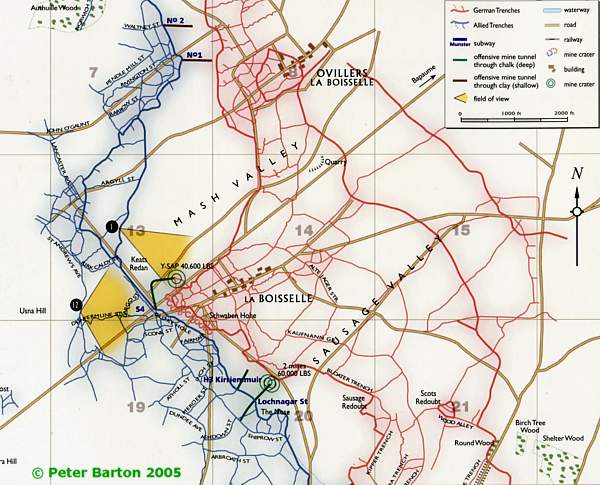
On 1 July 1916 the 70th Brigade of the 8th Division advanced from the Usna Hill to the Village of Ovillers, north of the Albert – Bapaume Road, and a depression parallel to the road, “Mash Valley”. The main target for that day was meant to be reaching the church at Pozières.
After blowing several mines like the Lochnagar mine , ...

... and a mine at Y-Sap (40.000 lbs), left of the road, ...

... the 34th Brigade with 4 battalions of Northumberland Fusiliers, Tyneside Scottish and Tyneside Irish, attacked from the Tara Hill to Y-Sap and la Boisselle village. But in No Man’s Land they were thrown back and sustained many casualties.
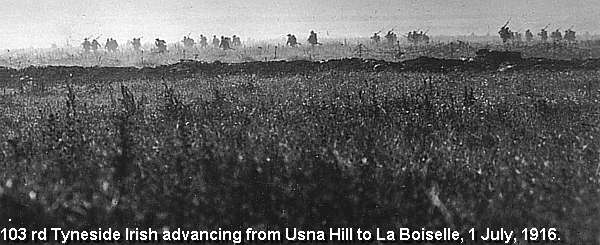
Both villages were not captured yet , but the British won some ground here and to the south of La Boisselle . On 4 July , the 19th (Western) Division cleared La Boisselle and on 7 July the 12th ( Eastern ) and 25th Divisions gained part of Ovillers , the village being cleared by the 48th (South Midland) Division on 17 July . The two villages were lost during the German advance in March 1918, but they were retaken on the following 24 August by the 38th (Welsh) Division .

Some interesting memorials and graves on the Ovillers cemetery.

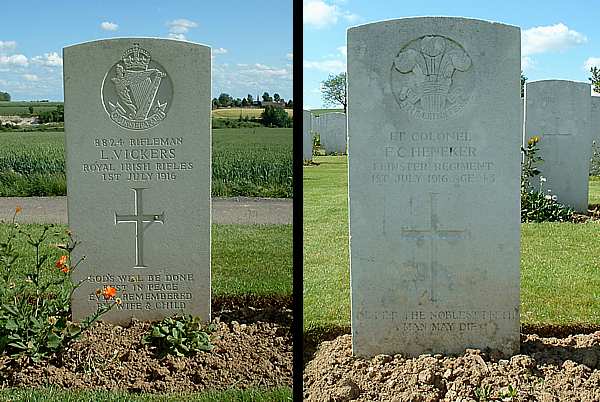
From Ovillers we cross the D 929 to visit la Boisselle.
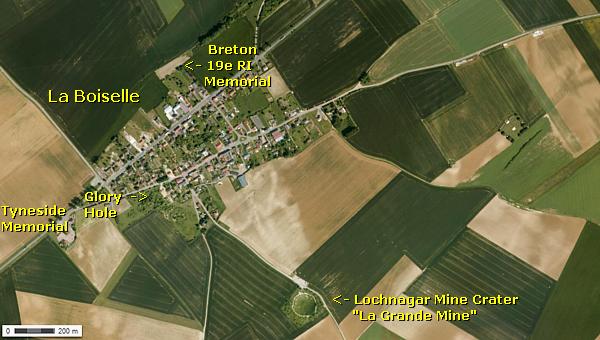
Panorama view from Ovillers over Mash Valley to la Boisselle.
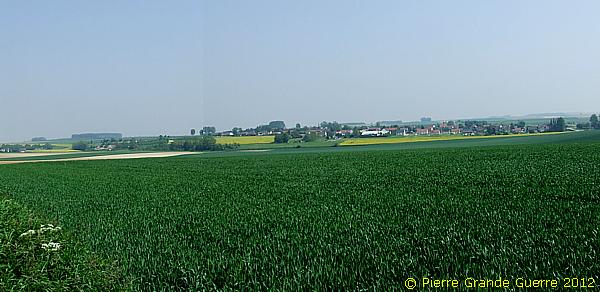
We start at the Tyneside Memorial.
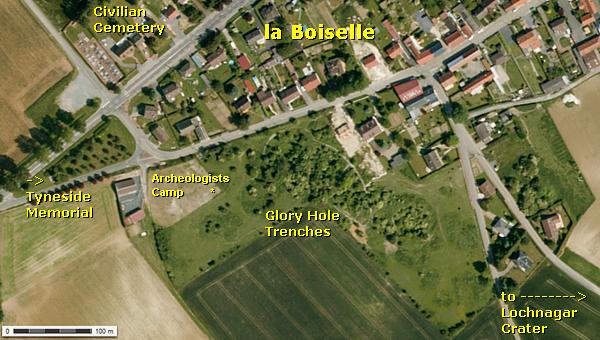
Along the D 929 stands the Tyneside Memorial Seat, to commemorate the actions of the 102nd Tyneside Scottish Brigade and the 103rd Tyneside Irish Brigade.
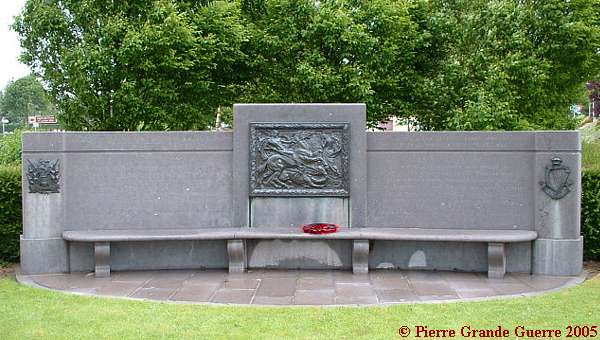
On the other side of the road the civilian cemetery ( behind the green hedge ) formed a centre point during the Franco-German fights of 17 December 1914. This spot also forms the frontline of 1 July 1916, where the British would be halted at the end of the day.
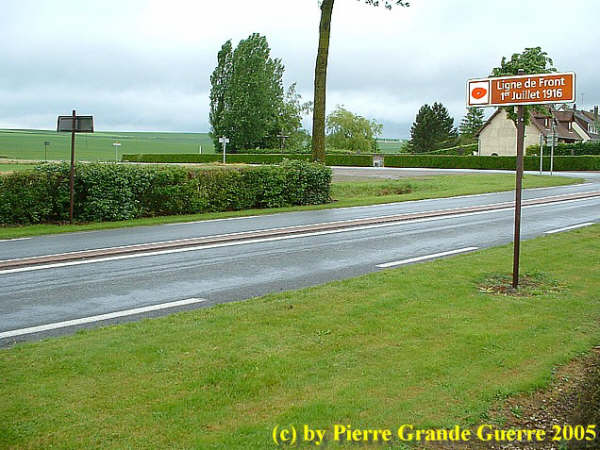
We skip just for a moment our visit to the Glory Hole trenches and save it for later on this page to visit first the Lochnagar Mine Crater.
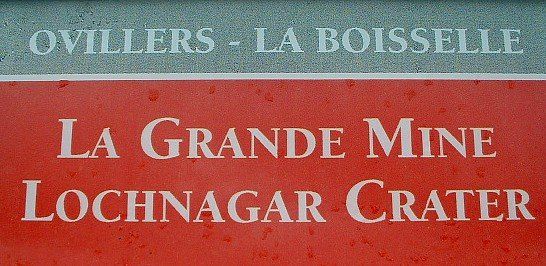
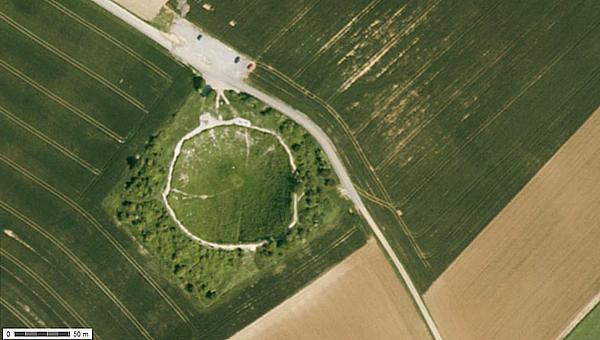
This Lochnagar Mine Crater was caused by one of 17 huge mines, ...

... which the British detonated along the Somme front on 1 July 1916 at 7.20 A.M.
For more detailed information about this mine explosion, visit my photo impression; " Somme - Mine Craters" .
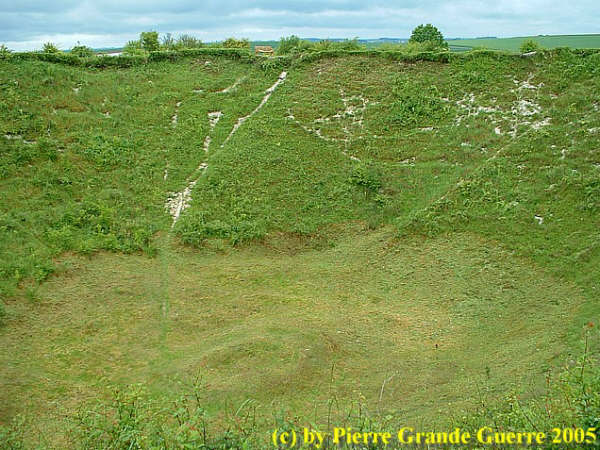
From the dead end road of the Lochnagar Crater we return to the Glory Hole trenches.

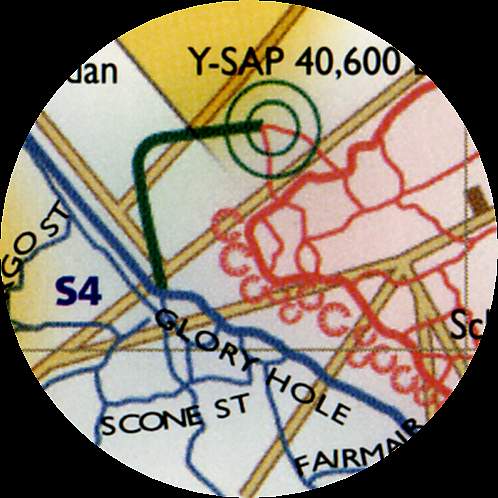
Archaeologists were researching this site of tunnels, trenches and craters. This day they were, alas, not present to receive us. From outside of the fence I notice the info signs, which are already positioned along the traces of the trenches. We hope of course that that this site will be opened in the future to the public.
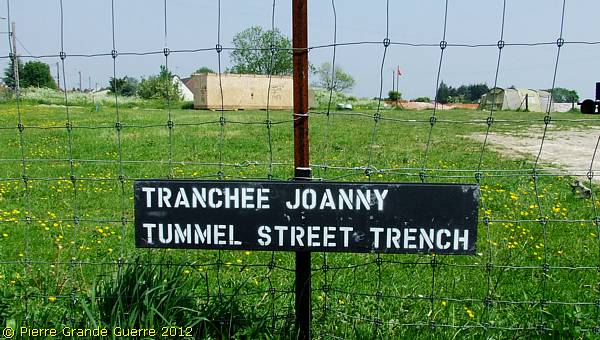
Marie Pierre Jouanny , after whom this trench was named , was a sergeant in the Breton 19e Régiment d'Infanterie. He was killed in action on 28 February 1915 near this spot, probably not far from the trench, which took its name.
When the British took over these lines from the French in June 1915, the British soldiers have renamed this trench "Tummel Street Trench".
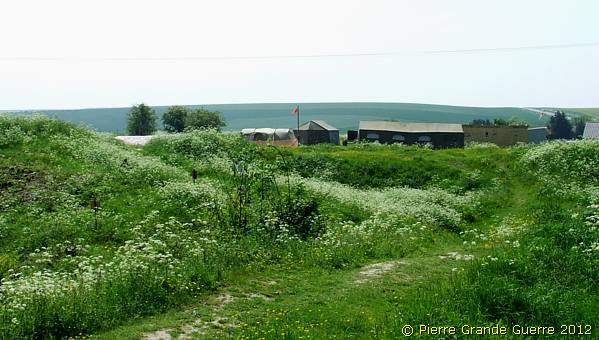
Although the emphasis of most memorials along the northern Somme Front is on the British actions of 1916, the name of this Breton Sergeant Pierre Youanni reminds us, that we sometimes tend to forget that the French had to defend these lines themselves until June 1915.
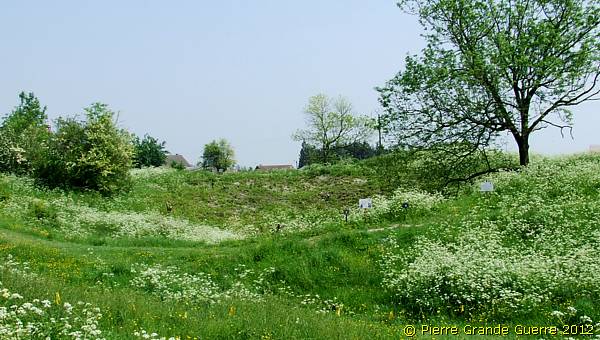
On 17 December 1914 these same trenches , here at the Glory Hole, formed the jump-off trenches of the Breton 19e Régiment d'Infanterie for a massive attack on Ovillers and la Boisselle, then occupied by the Germans.
The French Breton Regiments
and
the
slaughter
of 17 December
1914

On 16 December 1914 the villages of Ovillers and la Boisselle were occupied respectively by the German Reserve Infanterie Regiment 119 and 120. South-east of the village this R.I.R. 120 occupied on a height of 109 metres a farm, reinforced into a stronghold, called the "Granathof" or the "Granatenhof".
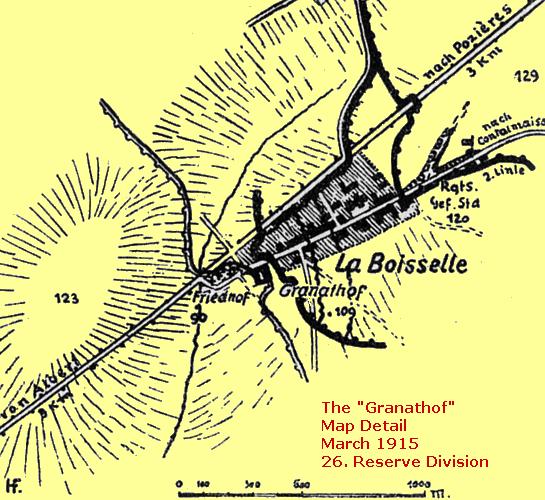
The French were at the south -western outskirts of la Boisselle .

On 17 December 1914 the French Army launched a massive attack with 5 divisions on the German front line sector running from Thiepval in the north to la Boisselle in the south.
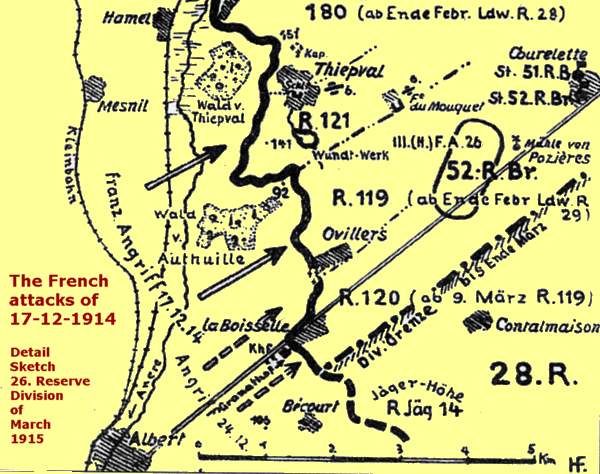
The main trust of the attack concentrated on the line Thiepval - Orvillers , occupied by two German Reserve Infanterie Regiments of the 26. Reserve Division , the 119th at Orvillers , and 120th at la Boisselle .
The main goal was to eliminate some German “ Blockhauses ”, bunkers and strongholds on the south , east and west of Ovillers and to progress via Mash Valley.
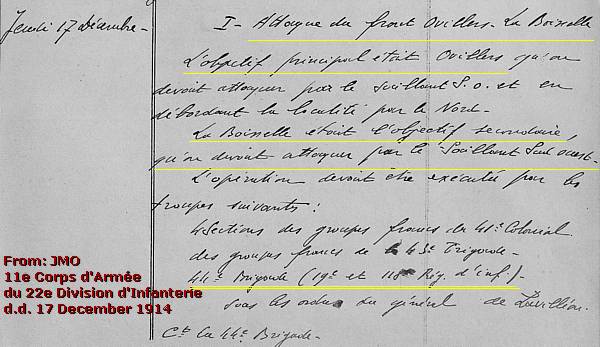
This was the task of the Breton 19e Régiment d’Infanterie , heavily supported by colonial units. The Breton 118e R.I. had to capture the civilian cemetery of la Boisselle , move north-eastward to eliminate some blockhouses , and from there go north-westward crossing Mash Valley to support its partner, the 19e R.I..
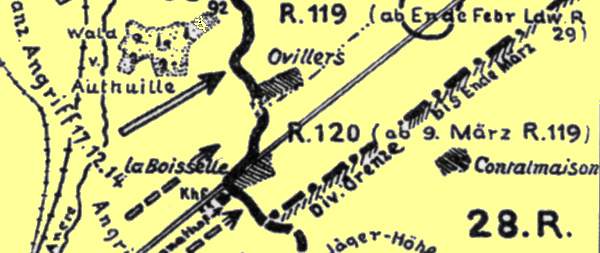
But as soon , as the 19e R.I. reached the valley at a location some 750 metres beyond , on the northern outskirts of la Boisselle , all hell broke lose .
(We will visit later on this photo page the location of the Breton Memorial, north of the village.)
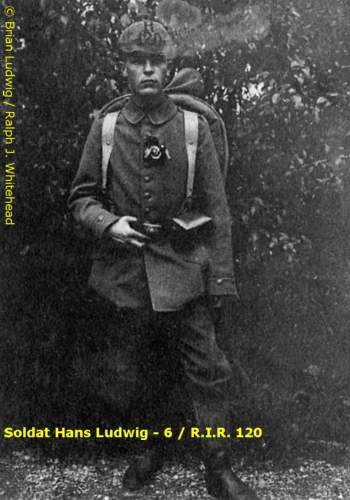
| From his post at the " Granatenhof " stronghold at la Boisselle Hans Ludwig , a German private of 6 Komp . / R.I.R. 120 witnessed the French attack at Ovillers and la Boisselle : “The French were
still
in formation
, officers
going
up and
down the
line, which
showed
signs
of unrest. An officer
raised
his hand and
they
fixed
bayonets. Our
orders were
not
to
start shooting
until
we were
told. We were
getting
restless as it
must have taken the
French about
15 minutes to
get ready. They
paid
no attention whatsoever
to
us
and
concentrated
only
on the
unsuspecting
R.I.R. 119 to
our
right, who
, on account of being
down in the
( Mash
) valley
, could
not
see
what
was happening. I never saw any attack that was as thoroughly killed before it got under way as this one. Two machine guns on the top of la Boisselle covered the territory behind the third ( approaching ) French line, cutting them off from any chance of getting back into their trenches. The other four together with the infantry , fired right into the thick masses.(…..) The French force of about 3,000 had dwindled to not more than 500 and they raised their hands over their heads , the signal for us to stop firing with the exception of those covering the lines of retreat. The French losses during the brief space of about 20 minutes were over 2,500 dead and wounded.” ( Source: Ralph J. Whitehead - "The Other Side Of The Wire - Volume 1".) |
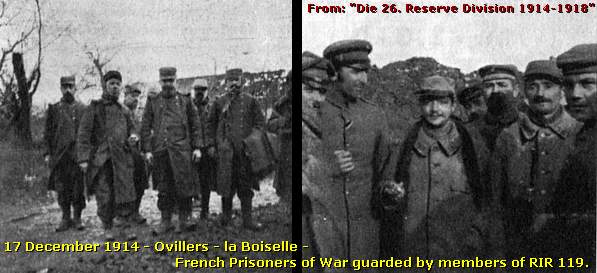
The Breton 19e R.I. was decimated.
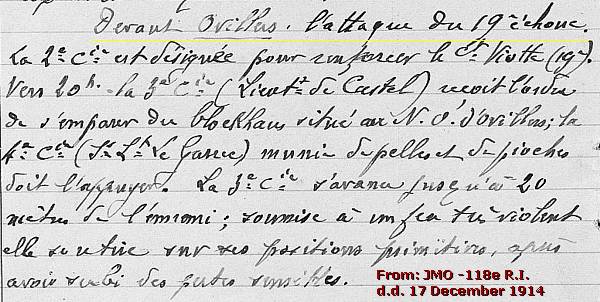
The only French success of this day was the occupation of the civilian cemetery of la Boisselle by a company of the "Bataillon Bouvier" of the 118e R.I..
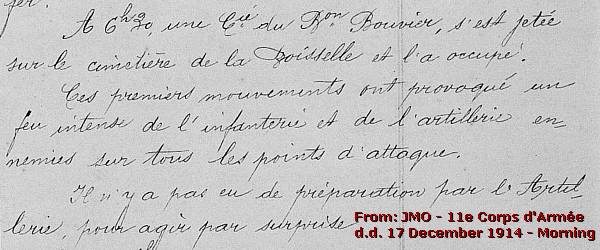
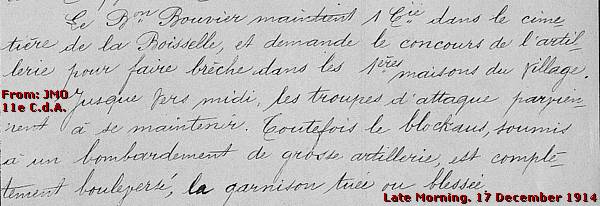
Nevertheless, some days later, and in spite of this disaster, the fighting flared up during Christmas 1914, this time concentrating on the "Granatenhof" stronghold.
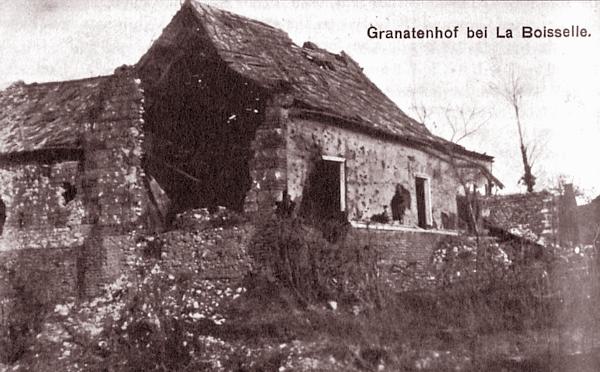
A mine crater , perhaps one of the many , which gave this location its name of Glory Hole.

This interesting video of the 3D laser scans carried out in June and October 2012 of the " Glory Hole " and the Lochnagar Crater at La Boisselle in Northern France shows the underground situation. Thanks to the La Boisselle Study Group ( http://www.laboisselleproject.com/ ) !!
From the Glory Hole we continue to the Breton 19e R.I. Memorial, north of the village, ...
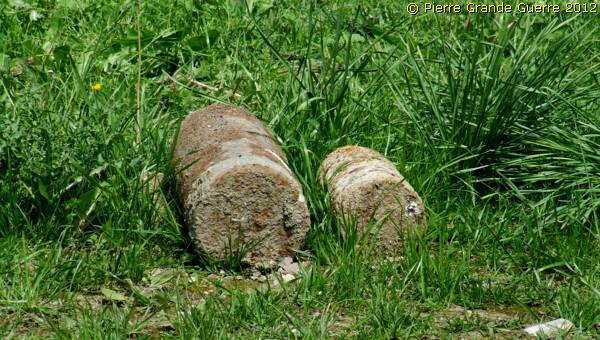
... passing a private garden with two shells lying on the lawn.
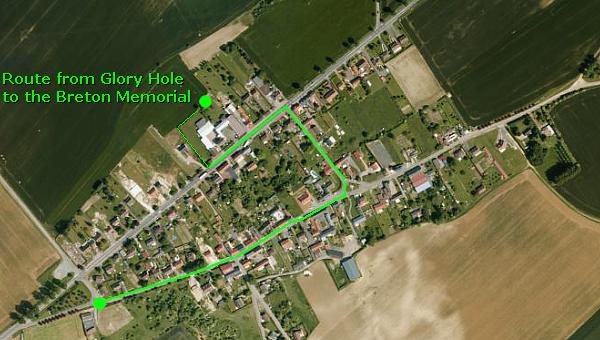
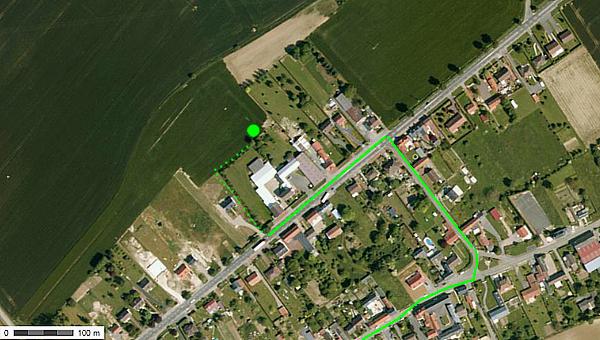
Via a sandy country road we arrive at the " Calvaire Breton de la Boisselle ", or the Breton Calvary of la Boisselle.
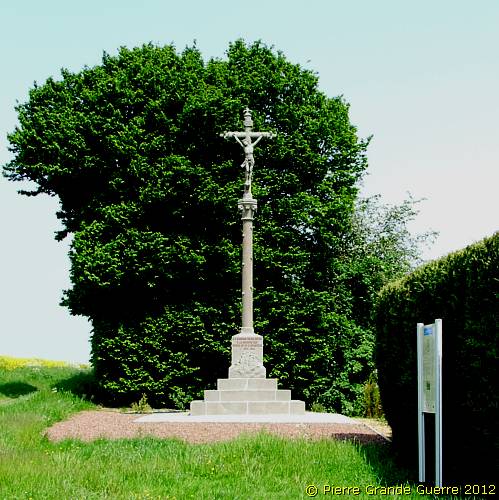
This is the site which I mentioned before. The Memorial commemorates the slaughter on 17 December 1914 of the Breton 19e R.I.
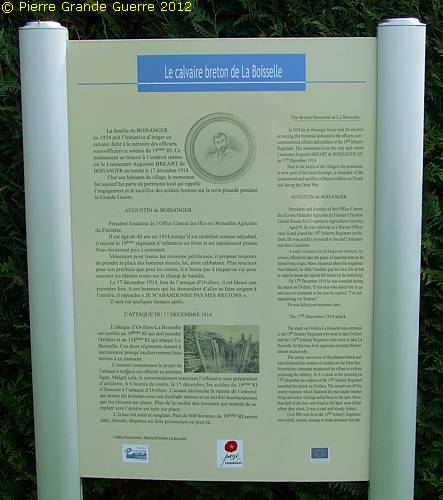
In two languages this information panel tells the bloody history of this location and its surroundings. It also describes in detail the heroic last moments of Lieutenant Augustin de Boisanger of the 19e R.I..
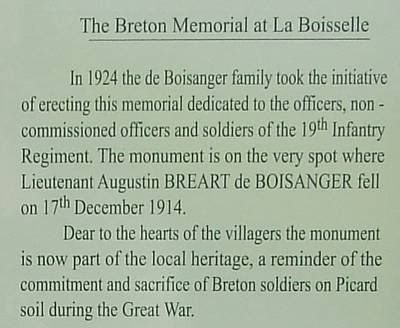
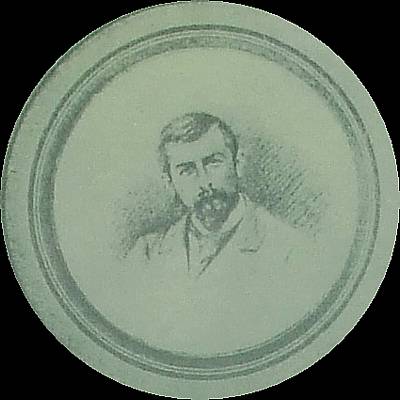
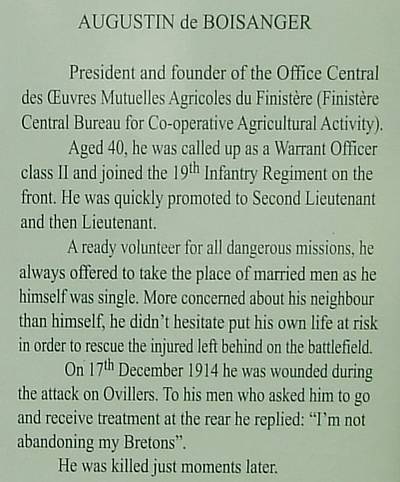
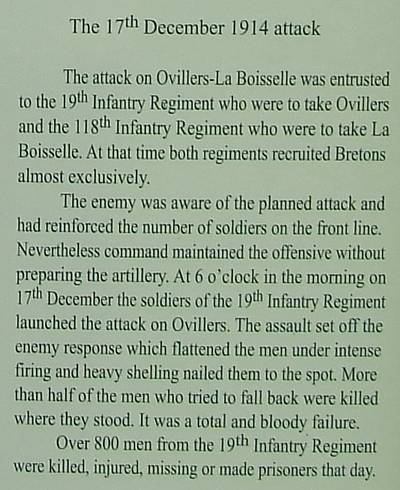
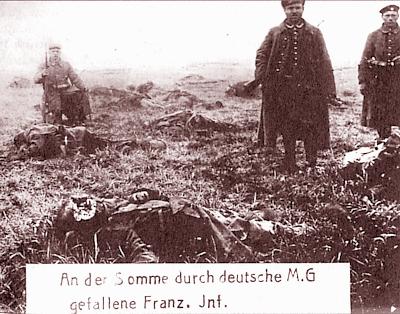
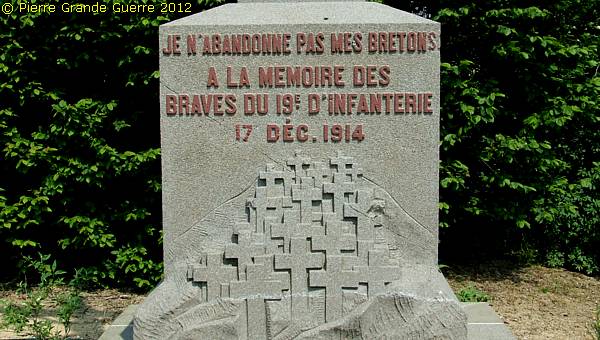

We leave la Boisselle and December 1914. We return to 1916.

Along the D 9292 we continue northward into the direction of Pozières.
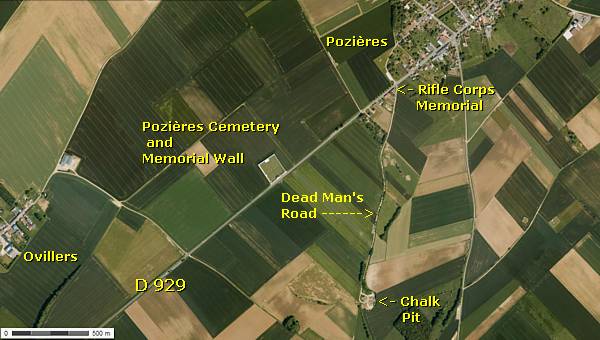
Just before the village of Pozières , along the D 929, stands the Memorial for the King's Royal Rifle Corps.
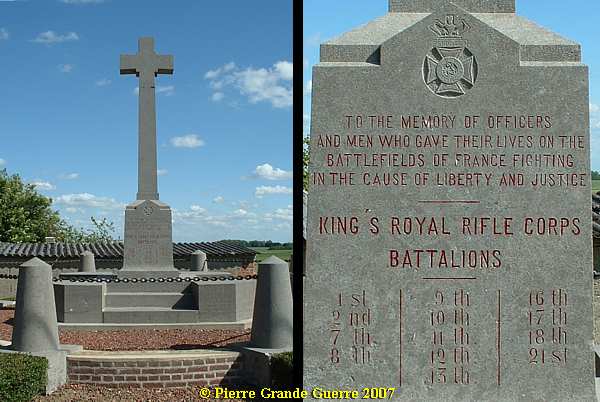
Behind the Memorial we drive into a narrow country road , which used to be called the Dead Man’s Road . On 15 July 1916 remnants of the 8th East Lancashires and 11th Royal Warwick’s sheltered from German fire in this sunken road, and the Chalk Pit, at the end of this road.
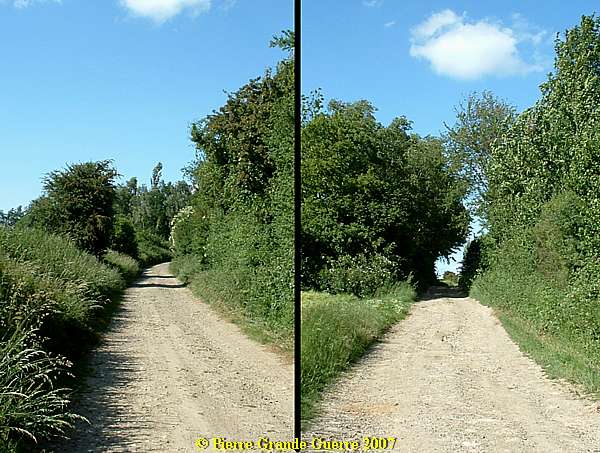
In the Chalk Pit the Battalion Headquarters was established under heavy artillery fire. After an artillery bombardment and another infantry attack, they advanced only until 300 m. south from Poziéres village, with the loss of 1400 casualties.
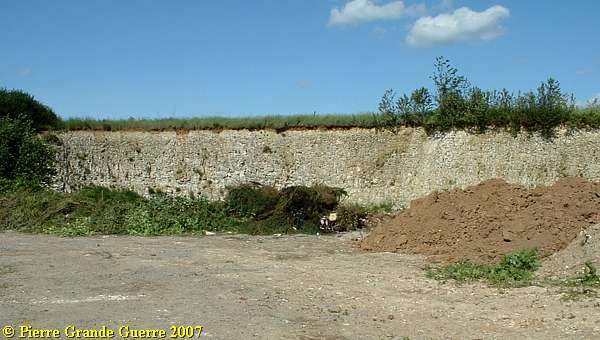
View from Dead Man's Road over the Battlefield to the Pozières British Cemetery along the D 929.
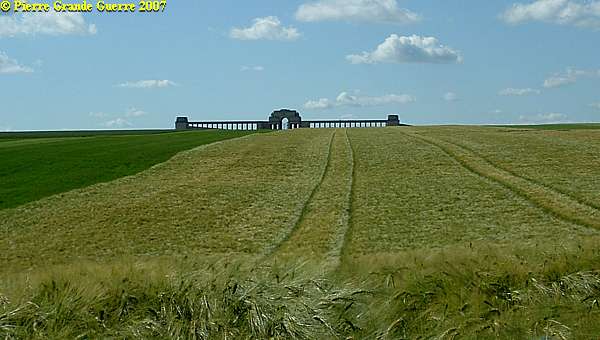
Now we save our visit to the Pozières British Cemetery for later in these series of Somme photo impressions. In the next photo impression we will first visit the Hawthorn Mine Crater and the battlefield of Beaumont Hamel.
Continue to the next chapter: " Hawthorn Ridge - Beaumont Hamel ".










